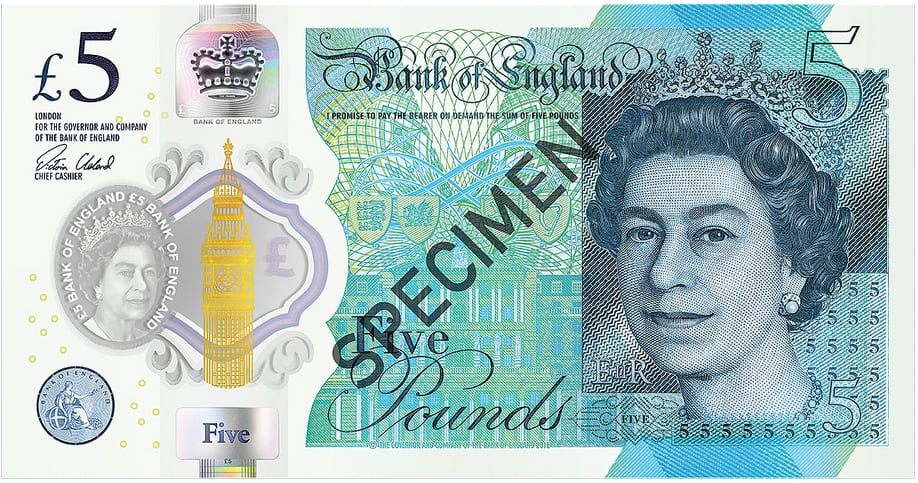
Whilst it might sound a bit – well, weird to make bank notes out of a plastic, polymer is a thin, flexible and very strong material that has lots of qualities that make it a really good choice for bank notes.
One of which is that they’re tough enough to survive a spin in the wash and are easy to wipe clean too!

The new polymer fivers are printed at the Bank of England Print works in Essex.
They’re made from a see-through plastic film that’s specially coated with an ink layer that enables it to carry a very detailed printed design.
The design is made that way on purpose to make it hard to copy.
These bank notes are made from a see-through plastic film that’s specially coated with an ink layer that enables it to carry a very detailed printed design.
Now the design is made that way on purpose to make it hard to copy.

As well as a see-through window with images and foil patches that show different words when you tilt them, polymer notes have raised writing.
For example, when you run your finger across the front of the new fiver, you can feel raised print around the words “Bank of England” and the number five.
Not only do they have better security features, polymer notes are also much better for the environment than paper notes.
That’s because they should last at least 2 and a half times longer than a paper note and so the Bank has to print fewer notes, which means less energy is used in manufacturing and moving them around the country. And when a polymer note has reached the end of its life it can be recycled.

Over 30 countries already use polymer notes – so you may already have seen some if you’ve visited Australia, Canada or Fiji.
So keep your eyes peeled and you could be checking the new fivers out for yourself soon – well, before you spend one!
 Click here to out more about money with the Bank of England!
Click here to out more about money with the Bank of England!
Add a comment





 Apple Podcasts
Apple Podcasts Google Podcasts
Google Podcasts Player FM
Player FM